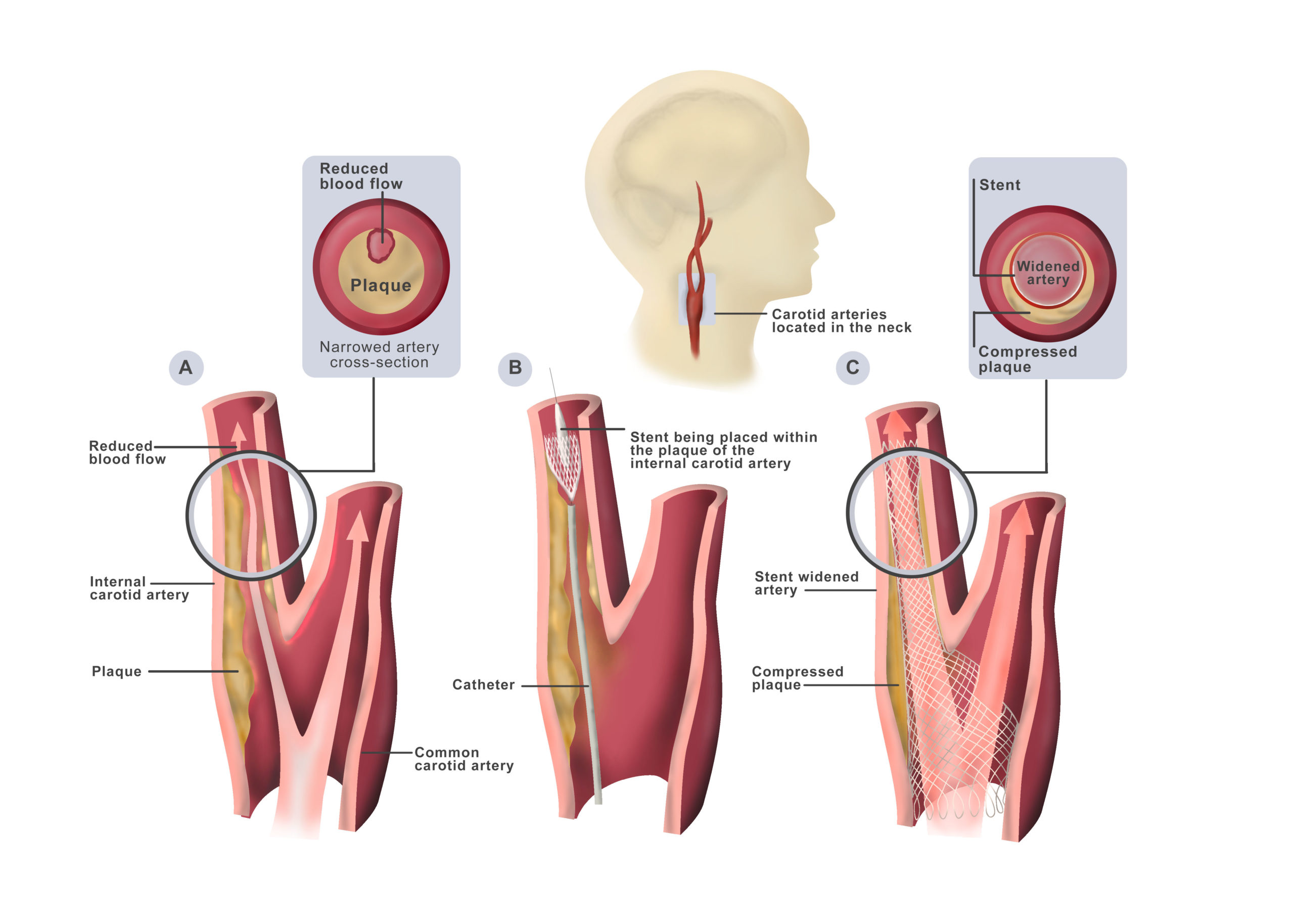Carotid angioplasty / stenting is a minimally invasive endovascular procedure that compresses the plaque and widens the lumen of the artery. It is performed during an angiogram in a radiology suite. A flexible catheter is inserted in the femoral artery in the groin. It is guided through the blood stream past the heart, and into the carotid artery. Next, a small catheter with an inflatable balloon at the tip is positioned across the plaque. The balloon is opened to dilate the artery and compress the plaque against the artery wall. The balloon is then deflated and removed. Finally, a self-expanding mesh-like tube called a stent is placed over the plaque, holding open the artery.

Angioplasty / stenting is typically indicated for select patients who:
- have moderate to high-grade carotid stenosis greater than 70%;
- have other medical conditions that increase the risk of surgical complications;
- have recurrent stenosis; or
- have stenosis that was caused by prior radiation therapy.

